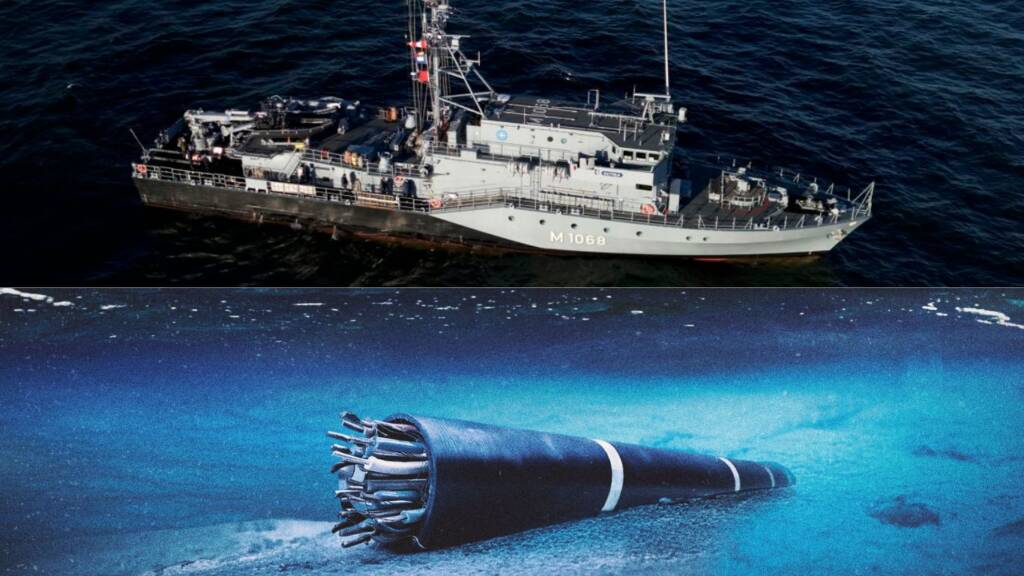Geopolitical tensions are escalating globally following reports of multiple undersea cable breaches in the Baltic Sea in recent months. Now this week Swedish authorities announced that they are investigating a possible breach of another subsea cable in the region. This latest development comes in the wake of previous alleged sabotage incidents, including the damaging of the Estlink 2 power cable and four internet cables on Christmas Day in 2024. The Estlink 2 cable, along with Estlink 1, plays a crucial role in transferring electricity from Finland to Estonia across the Gulf of Finland.
The Swedish Coast Guard has dispatched a vessel to the location of the reported breach, east of the island of Gotland. A spokesperson confirmed to the AFP news agency, “It is in the Swedish economic zone, and we are assisting with the crime scene investigation.” Police authorities are also actively investigating the matter.
Meanwhile, on February 21 (Friday), Finnish telecommunications company Cinia reported minor damage to its C-Lion1 fibre-optic cable, which connects Finland and Germany. Although the damage did not affect the cable’s functionality, it raises concerns over the vulnerability of critical communication infrastructure.
Importance of the Sea Cables
Laid on the ocean floor, fiber optic subsea cables serve as the arteries of international communication. Carrying roughly 95% of the world’s internet, data, and voice transfers, they are considered the fastest and most reliable means of data transmission. These cables have been instrumental in globalization and play an essential role in the modern global economy, facilitating daily transactions worth over $10 trillion.
Protecting undersea cables has become a matter of national interest for the affected nations due to their extreme importance. In January, NATO emphasized the importance of the cables and vowed to double patrol with naval ships in the Baltic Sea in order to save these cables from outside damage.
Currently, an estimated 600 subsea cables stretch across 1.4 million kilometres of the ocean floor. Despite their limited number, these cables account for the majority of the world’s internet traffic, making them a significant target for geopolitical control and dominance. Given the high risks and costs associated with laying new undersea cable systems, they are often owned by a consortium of stakeholders. Repairing these complicated cables at the bottom of the water bodies is not only delicate work but also requires resources and technologies.
However, the challenges surrounding these cables are manifold. In addition to the risks posed by natural disasters such as tsunamis, they are also susceptible to accidental damage from fishing nets, ship anchors, and marine life. More alarmingly, they remain vulnerable to sabotage, espionage, and data theft. The fact that these critical cables are no thicker than a garden hose and yet power global financial, government and military communications is a growing concern for governments worldwide.
Baltic Sea Cables Under Close Watch
Swedish Prime Minister Ulf Kristersson has acknowledged the situation, stating that the government has been briefed on recent developments. “I have for some time been aware of media reports of a possible new cable break in the Baltic Sea,” Kristersson shared on social media. In the past few months, several telecommunications and power cables have sustained damage in the Baltic Sea.
In January, authorities discovered damage to an undersea fibre-optic cable running between Gotland and Latvia, later ruling out sabotage. In December, the Estlink 2 electricity cable and four telecom cables linking Finland and Estonia suffered damage, adding to the growing list of infrastructure breaches. Additionally, two telecom cables in Swedish waters were severed a month earlier, including Cinia’s C-Lion1.
In response to these incidents, NATO members, including Sweden, announced in January that they would ramp up patrols in the Baltic Sea to protect critical underwater infrastructure. The repeated damage to undersea cables has had a significant impact on electricity distribution, data transfer, and internet services, which are vital to the Baltic nations. With these lifelines at constant risk, securing and protecting them has become a priority for regional and global players.
Also Read: Russia’s mysterious shadow fleet spooks NATO
As investigations continue, the possibility of deliberate sabotage looms large. The strategic importance of undersea cables in modern geopolitics cannot be overstated. The ongoing war between Russia and Ukraine and the increasing tension between European Nations and Russia over it can also be seen as the reason behind this sea cable damage to put extra pressure on dependent countries on the cable. The recent incidents in the Baltic Sea highlight the urgent need for enhanced security measures to safeguard these critical assets.
